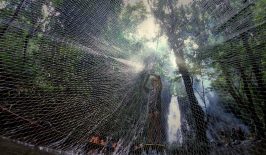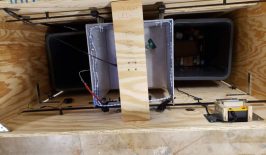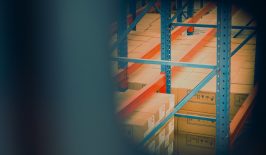The world’s resources are finite – most people should be aware of that by now – and making new products from these resources consumes enormous amounts of energy. At the same time, products are becoming increasingly short-lived and waste mountains are rising all over the world. Ways out of this climate-damaging loop are recycling and the circular economy. However, both currently play only a minor role for manufacturers.
This is mainly due to the fact that the costs for raw materials and initial production are still low. There are also purely practical reasons: There are still large differences in recycling processes and only limited quantities of waste available, the quality of which varies. This makes recycling a costly process for manufacturers.
The fact is, however, that recycling can save up to 90 percent of CO2 emissions compared to the production of new plastics. However, although we are still a long way from exploiting this potential, digital technologies could create important conditions to facilitate recycling processes.
A Digital Twin for the Circular Economy
Technologies based on artificial intelligence (AI) are already being used in a variety of ways to solve environmental issues and develop circular economies, for example to optimise production lines or identify end-of-life parts. Originating from the aerospace industry, a new, innovative approach is also emerging more frequently in this context: the so-called digital twin.
The “digital twin” is an exact digital representation of a real product or process and reflects the state of its physical counterpart at any point in time. To do this, the AI-based technology requires real-time data about the nature of the object being mapped itself and about its complex interactions with the environment. This data then provides for ongoing adaptation of the imaged object. In addition, the digital image is fed with historical data. This enables specific monitoring and the ability to simulate different scenarios in order to optimise real products or processes. One focus of digital twins is on predictive maintenance and demand forecasting. This generates forecasts of when and where something in the process or product needs to be improved or replaced, and how requirements will develop in the future.
This has several advantages: With the digital twin, concepts can be tested extensively in advance before resources are invested in their implementation, and real processes can be designed more efficiently.
CYCLOPS: Digital Twins in Circular Waste Management
The ability to make very accurate forecasts and thus predict demand can make digital twins an effective tool for closing information gaps in plastics waste recycling – paving the way to a seamless circular economy. The CYCLOPS (Circular Optimisation for Plastics) project of SKZ and its joint partners GreenDelta, Cirplus and the Wuppertal Institute for Climate, Environment and Energy gGmbH shows how this can work.
“Recyclates are often met with a certain amount of scepticism. On the one hand, there are doubts about their basic potential applications and whether they meet specific technical requirements. However, it is often the case that potential users have too little information and knowledge. Here, additional information offers could help to reduce reservations,” Dr. Jan Werner, project manager at SKZ, explains to RESET. In addition, many waste streams cannot be predicted well, since waste does not occur on a scheduled basis and the properties of recyclates are subject to greater fluctuations than those of new materials. All this together means that industry often decides against using recyclates.
CYCLOPS is designed to fill this gap and inform plastics processors, reprocessors and waste producers about the properties and reprocessing options of raw materials. The freely available digital system behind CYCLOPS is built on a digital twin that enables users to evaluate materials through AI-based data processing and analytics, and forecast their availability and demand. In the long term, it is hoped, this incentive will lead to greater willingness to recycle and close economic loops.
The project of the collaborative partners around SKZ is one of many that addresses complex problems and environmental issues on the basis of a digital twin. It is being funded by the German Federal Ministry of Education and Research (BMBF) as part of the “Digital GreenTech” funding guideline.
Digital Green Tech
Since 2020, the BMBF has been funding technologies that contribute to the conservation of natural resources and the reduction of environmental pollution in Germany and worldwide with the “Digital GreenTech” funding guideline. The projects are in the application fields of water management, sustainable land management and geotechnology, as well as resource efficiency and circular economy. In addition to direct financial support, targeted measures take place to network the researchers and transfer the results.
Data Leads the Way
For digital twins to actually contribute to circular waste management, it is crucial that the data created in the digital twin be of high quality. On the one hand, they should be as complete as possible, i.e., reflect the entire value chain, and on the other hand, they should be very accurate. However, AI-supported plausibility checks and user assistance can support this process by automatically checking and supplementing the data or prompting the users to correct the entries. At the same time, the energy factor should not be forgotten when using AI, as Werner also notes: “The benefits for the circular economy must not be ‘bought’ by the additional consumption of a lot of energy by IT.”
Since applications based on artificial intelligence are very energy-intensive in the development phase, and especially during training, this power consumption must always be put in relation to the savings in the use phase. Only if more energy and resources are saved with the help of AI than went into its development does it have a positive eco-balance on balance.
From Digital Logs to Battery Twins
Even beyond plastics production, digital twins are now being used in many areas of the circular economy, such as the project with the German acronym DiGeBaSt, which is also part of the BMBF funding directive. Behind the cryptic acronym (translated as “Digital fingerprint: marker-free tracing from the felled tree trunk to the sawmill”) is the idea of enabling marker-free tracing of felled tree trunks back to the sawmill. This is intended to create incentives for forestry operations to manage forests more sustainably. Immediately after felling, a digital twin is assigned to the trees for this purpose, which receives real-time data of the real log, such as location, logistics or further processing, throughout the entire value chain. The data can then be accessed in a cloud at any time.
Batteries also contain substances that are relevant and valuable to industry and could be returned to the cycle through recycling. The DiRecLiB project (Direct Recycling of Active Materials from Lithium-Ion Batteries) therefore aims to use a digital twin to develop the basis for new recycling measures in order to recover relevant active materials from lithium-ion batteries as efficiently as possible.
Even our planet has already been mapped as a digital simulation: with the know-how of video game technology, a manufacturer of graphics cards has developed a simulation of the Earth, thus supporting climate research and environmental policy. The ESA is also already testing digital twins of our planet. Even on a smaller scale, namely in the construction sector, measures to reduce energy consumption benefit from digital twins. To this end, the EcoWorks project is working on a kind of second skin for buildings to insulate them in a C02-negative way – the design behind it: a digital twin that is used to create plans for individual insulations.
Digital Twins are Already a Reality – What More is Needed?
So digital twins have long since ceased to be “dreams of the future”; their potential applications are already being actively tested in many areas. But as helpful as they prove to be in saving resources, making processes more efficient and closing loops, the ecological costs of the technology – especially due to its high power requirements – should not be forgotten for a sustainability assessment.
However, this does not mean that ideas and projects already underway should be discarded outright. Rather, it motivates innovative ideas for effective and sustainable technologies to be advanced precisely here. Politicians must also provide support here with targeted subsidies and the introduction of appropriate framework conditions.










